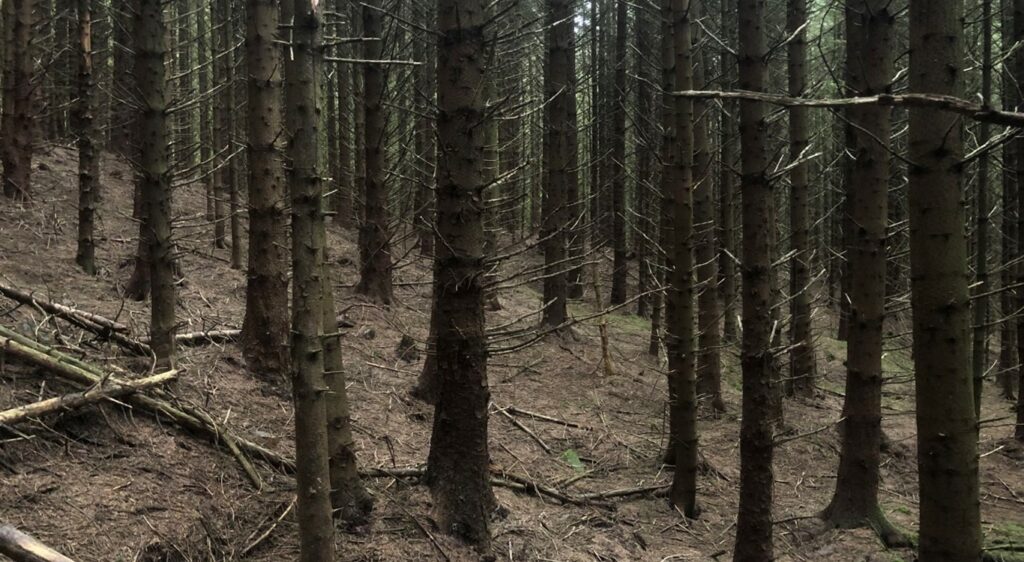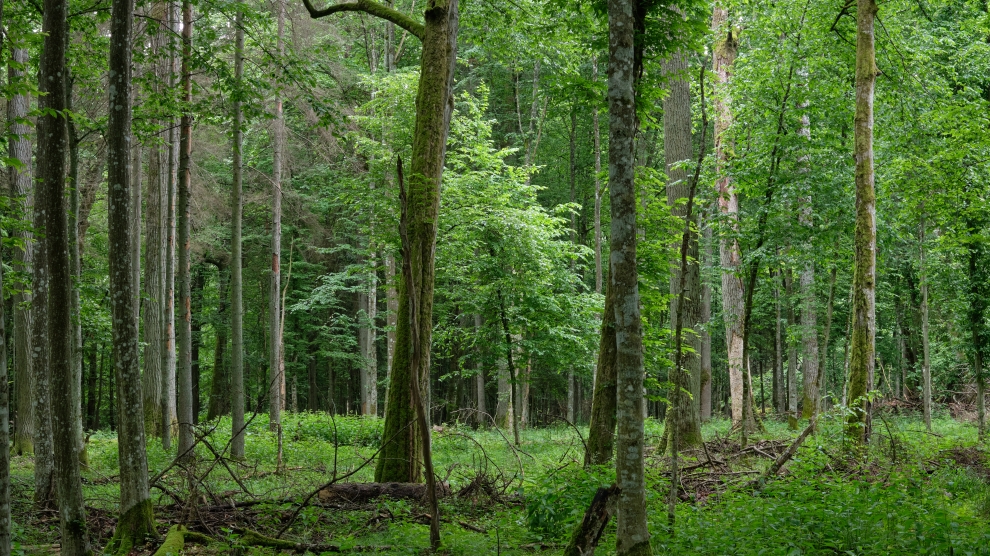Faustmann’s formula dates from the 1840’s; it gives a value for forestry land and indicates the optimum time to cut forest to maximise profit. It considers the price of timber, the stock of timber in the forest at the present time and the rent paid for the land. However, this approach does not consider a crucial aspect of forestry: ecosystem services. The value of a forest is so much more than the timber it produces. Ecosystem services include carbon sequestration, air quality improvement, water quality regulation, biodiversity conservation, erosion control, wind breaking, recreation, eco-tourism, and even additional products such as mushrooms, forageable plants and beekeeping.

Covering the land with a single tree species wastes the opportunity to provide invaluable ecosystem services. However, there are currently a lack of studies showing the benefits of mixed plantations over monocultures. This is partly because plantations take many years to develop and mature; the benefits of diverse forests are not immediately apparent. Many writers suggest that with careful design and proper management, mixed-species plantations with two, three or four tree species can be more productive and have more advantages in economy, biodiversity, ecosystem services and forest health versus monocultures.

Of the 159 million hectares of forest in Europe, 33% are composed of monoculture plantations. This is roughly 52 million hectares, an area about 7.5 times the size of Ireland. The EU has committed to planting an additional 3 billion trees by 2030, under the European Green Deal. The New EU Forest Strategy for 2030 aims to increase forest diversity. It acknowledges the value of diverse forests for ecosystem services and climate change mitigation. These new trees will contribute to achieving the EU’s greenhouse gas emission reduction target of at least 55% in 2030. The EU has stated that forests need to be healthier and more diverse. We need to monitor and ensure this happens.

Figure 3. Pine and Eucalyptus monocultures are particularly vulnerable to wildfires, especially during drought periods. Photo courtesy of Photo by Matt Howard on Unsplash
The EU seems to be shifting towards more biodiverse forestry as part of the EU Green Deal, the Biodiversity Strategy, and the new EU Forest Strategy. Read our feedback submission to the proposed changes to the Plant and Forest Reproductive Material Legislation to learn more.

Mixed species forests have massive potential to restore ecosystem functioning.
Check out these successful reforestation projects to see what’s possible:
1. REDD+ (Reducing Emissions from Deforestation and forest Degradation)
This is a framework for Mexico’s national and state-level reforestation strategies. In the Yucatán Peninsula, government authorities, local communities, indigenous peoples and private companies joined forces to build a new pathway for sustainable development.
Learn more: The Nature Conservancy – Natural Climate Solutions (PDF)
2. The Mitsinjo Association
This is a community based natural resource management project that is restoring rainforests in Madagascar through wildlife corridors with the help of the community. The project trained local people, including former lemur hunters, to become nature tourism guides.
Learn more: Association Mitsinjo – Reforestation
3. Beau Miles
This author planted a forest of 1440 mixed, native trees in 24 hours, single handed. One tree a minute! All trees were planted with 5 minutes to spare. A follow-up film will be made in two years.
Learn more: Beau Miles – Planting a small forest in 24 hours (YouTube)
4. Imogen Rabone
This wildlife conservationist runs Trees on the Land, a project that distributes and plants native trees in Ireland, including downy birch, common alder, oak, Scots pine, hazel, rowan, crab apple, hawthorn & blackthorn.
Learn more: www.treesontheland.com
5. Trees for Life
This charity has been rewilding and reforesting 4,000 hectares of the Scottish highlands since 2008. Deer and livestock were excluded from surviving patches of forest to allow natural regeneration, while saplings grown from collected seed were introduced to barren areas. Red squirrel and golden eagles were introduced, and a rewilding centre is under construction, set to open in 2023.
Learn more: Rewilding Britain – Dundreggan
The best time to plant a tree was twenty years ago. The second-best time is today.
